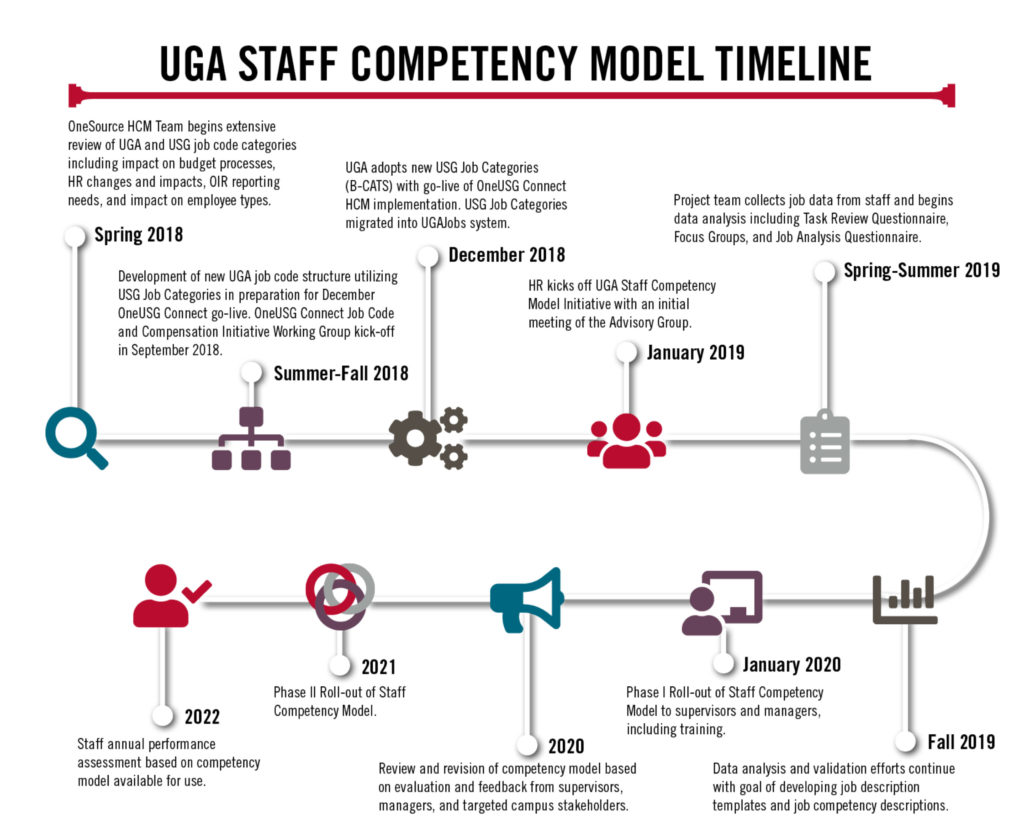The University of Georgia Human Resources department is leading the charge in developing a new staff competency model that will benefit UGA staff in the coming years.
A staff competency model organizes job responsibilities into clusters that help to frame the knowledge, skills, abilities and other attributes needed to perform effectively in any staff role across the university. A clearly defined staff competency model not only provides clarification for job roles but also ensures a competency-based performance management and measurement process.
“As a university community, we are excited to be able to roll out the new competency model beginning in early 2020,” said Juan Jarrett, associate vice president for human resources. “A well-developed, accurate staff competency model provides clear performance standards for staff and leadership so that staff members know exactly what tasks to perform in their role and how to perform those tasks to be successful.”
The UGA staff competency model is the result of significant university involvement, from staff engagement to academic input. Integral to this process are members of the psychology department’s Professional Industrial-Organizational Psychology Master’s Program, which is under the direction of Brian Frost.
The central HR team also contracted with outside consultants to help collect and analyze data, collaborated with an advisory committee that included members from all major academic and administrative units and involved current experienced staff from across the university who provided input on tasks and competencies required for effective performance in their own jobs.
“The amount of effort that has gone into developing this competency model over the past year will pay off in terms of our ability to support the professional development and performance management of our people to mutual—and optimal—benefit,” said Jarrett.
Next steps for the UGA staff competency model include data collection regarding job behaviors as well as the application of the staff competency model in relation to performance evaluations.
“The final step in designing the content for a competency model is to craft behavioral statements that illustrate ineffective and effective behaviors for each of the competencies for each job level,” said Frost. “Staff member input to date has driven the design of this model and will continue to be essential in this final data collection step.”
These last steps are underway now and will involve drafting and validating behavioral statements in workshop settings. Representative staff from exempt and nonexempt positions as well as leadership and management positions have been recruited to participate.
The UGA staff competency model is an initiative built by UGA staff, for UGA staff.
“Every effort will be made to ensure the new competency model makes sense for our UGA community,” said Ryan Nesbit, vice president for finance and administration. “UGA has not revamped its position classification and compensation policies in many years, so it’s certainly time for us to evaluate every facet of our system and processes and update them to better meet the needs of the current work environment. The new staff competency model will play a major role in helping us to do that.”
To learn more about the staff competency model initiative, see the initiative’s web page at https://hr.uga.edu/competencymodel/, also accessible via the HR website homepage.
